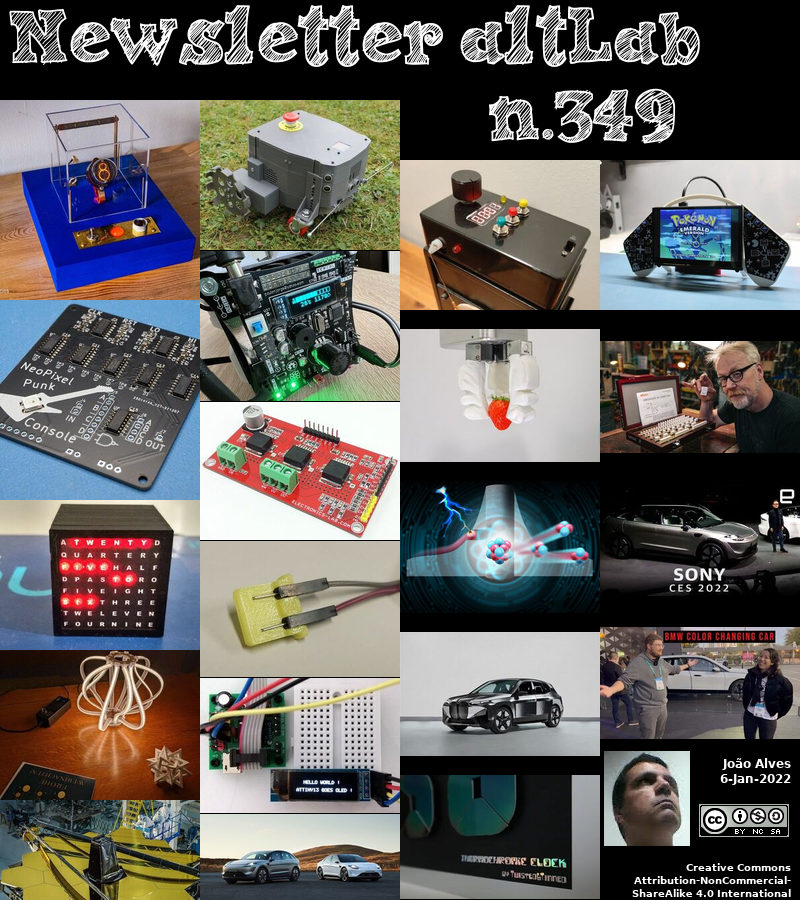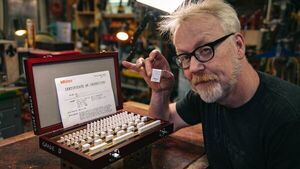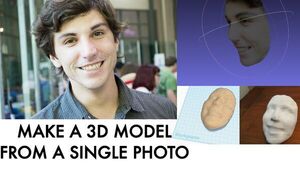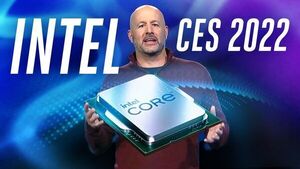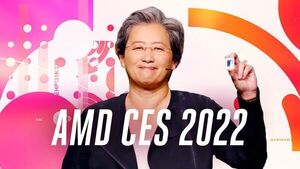2022-01-06 - Nº 349
Editorial
Esta é a Newsletter Nº 349 que se apresenta com o mesmo formato que as anteriores. Se gostar da Newsletter partilhe-a!
Todas as Newsletters encontram-se indexadas no link.
Esta Newsletter tem os seguintes tópicos:
Faz hoje anos que nascia, em 1745, o pioneiro francês do balão Jacques-Étienne Montgolfier. Ele, com o seu irmão Joseph-Michel Montgolfier, desenvolveu o balão de ar quente e realizou os primeiros voos desamarrados. Uma primeira experiência com um balão de tafetá cheio de fumo quente foi feita numa demonstração pública a 5 de Junho de 1783. Seguiu-se um voo com três animais como passageiros a 19 de Setembro de 1783, exibido em Paris e testemunhado pelo Rei Luís XVI. A 21 de Novembro de 1783, o seu balão transportou os dois primeiros homens num voo desamarrado - o primeiro voo tripulado de balões. Modificações do desenho básico de Montgolfier foram incorporadas na construção de balões maiores que, em anos posteriores, levaram à exploração da atmosfera superior. Étienne também desenvolveu um processo de fabrico de vellum.
Faz também hoje anos que nascia, em 1795, o químico francês Anselme Payen. Ele fez importantes contribuições para a química industrial e descobriu a celulose, um constituinte básico das células vegetais. As fábricas do seu pai produziram vários produtos químicos, e açúcar refinado, pelo que Payen estudou ciência. Em 1815, aos 20 anos, foi nomeado gerente da fábrica do seu pai para a refinação de bórax bruto importado. Aí desenvolveu uma síntese para o bórax a partir de soda e ácido bórico e em 1820 criou uma nova indústria que poderia comercializar o produto sintético a um terço do preço do bórax natural refinado. Em 1822, ele tinha encontrado o valor do carvão vegetal animal para clarificar as soluções de açúcar. Em 1833, Payen descobriu a primeira enzima, para a qual cunhou o nome de diastase. Converte amido em açúcar, e foi mais tarde (1893) chamado amilase.
Por fim, faz hoje anos que nascia, em 1925, o fabricante de automóveis John DeLorean. Ele geriu o desenvolvimento de vários veículos ao longo da sua carreira, incluindo o Pontiac GTO muscle car, o Pontiac Firebird, Pontiac Grand Prix, Chevrolet Cosworth Vega, e por fim o DMC DeLorean sports car, que foi apresentado no filme de 1985 Back to the Future. Foi o chefe de divisão mais jovem da história da General Motors, tendo depois partido para iniciar a DeLorean Motor Company (DMC) em 1973. Os atrasos na produção significaram que o primeiro carro da DMC não chegou ao mercado consumidor até 1981, quando um mercado de compras deprimido foi agravado por má imprensa de críticos e do público. Após um ano, o DeLorean não conseguiu recuperar os seus 175 milhões de dólares de custos de investimento, acumulando carros não vendidos, e a empresa estava em dificuldades financeiras. Foram produzidos cerca de 9000 veiculos. Apesar de o carro ter uma reputação de má qualidade de construção e uma experiência de condução menos satisfatória, o DeLorean continua a ter um forte seguimento impulsionado em parte pela popularidade dos filmes Back to the Future. Estima-se que 6.500 DeLoreanos ainda se encontram na estrada.
Em 1838, o sistema telegráfico de Samuel Morse é demonstrado pela primeira vez na Speedwell Iron Works em Morristown, Nova Jersey. O telégrafo, um dispositivo que utilizava impulsos eléctricos para transmitir mensagens codificadas através de um fio, acabaria por revolucionar a comunicação de longa distância, atingindo o auge da sua popularidade nas décadas de 1920 e 1930.
E nesta primeira edição da newsletter de 2022 gostaria de passar uma vista de olhos pelo que passou mais de relevante nas 52 newsletters de 2021.
Em termos de electrónica DIY tivemos o lançamento do Raspberry Pi Pico e da placa Raspberry Pi Zero 2 W, não esquecendo da versão 6.0 do software EDA KiCad. O Planeta Marte foi visitado por três equipamentos lançados pelo Homem. Os Emirados Árabes Unidos enviaram a sonda "Amal". A China enviou a sonda Tianwen-1 com o rover Zhurong e por fim a NASA enviou a sonda Mars 2020 com o rover Perseverance e o helicóptero Ingenuity equipado com Linux. A Virgin Galactic assim como a Blue Origin iniciaram as viagens espaciais comerciais conseguindo transportar até à orla exterior da atmosfera (cerca de 86 quilómetros de altitude) e trazer de volta civis à Terra. Ambas duraram alguns minutos. Também a SpaceX lançou do SpaceX Crew Dragon Resilience com quatro norte-americanos civis. Lançada acoplada ao foguetão Falcon 9, esta missão teve o nome de baptismo "Inspiration4" e é considerada a primeira missão espacial totalmente civil. Esta missão durou 3 dias. O final do ano de 2021 ficou ainda marcado pelo lançamento tão aguardado do Telescópio Espacial James Webb. Desenvolvido desde 1996 pela NASA com contribuições da ESA e da CSA, o telescópio irá fazer uma viagem de 1.500 milhões de quilómetros até entrar numa órbita halo a volta do Sol-Terra (Ponto de Lagrange L2) a partir de onde fará as observações. A Microsoft lançou o Windows 11, a Canonical lançou os Ubuntu 21.04 e 21.10, a RedHat lançou o Fedora 35 e a Debian lançou o Debian 11 - Buster. O Linux fez 30 anos em 2021.
Esta semana decorre a CES 2022. A Intel lançou a sua 12ª geração de processadores Alder Lake . A AMD apresentou os seus novos processadores Ryzen 6000. A Sony demonstrou o seu novo conceito de SUV, o Vision-S 02, que incorpora capacidades de operação remota podendo ser controlado à distância através de redes 5G. A BMW apresentou em conjunto com a Eink um prototipo do seu novo carro, o iX, que permite controlar a cor do veiculo em tempo real alterando a apresentação do mesmo de forma dinâmica entre branco e preto. O carro representa uma nova aplicação radical da tecnologia E Ink, e embora alguns possam vê-lo como o derradeiro veículo de fuga ao modificar instantaneamente a sua tonalidade, existem algumas aplicações práticas (e mais interessantes) para um carro com mudança de cor. A utilização de branco para reflectir o Sol em dias quentes e de preto em dias frios para reter o calor do Sol faz diferença em termos de aproveitamento térmico.
E nesta semana que passou também recebemos a noticia que o escudo solar que o Telescópio James Webb transporta foi aberto com sucesso. Este escudo de 21 metros é um marco fundamental na sua preparação para operações científicas. O escudo solar - do tamanho aproximado de um campo de ténis em tamanho real - foi dobrado para caber dentro da área de carga útil de do foguetão Arianespace Ariane 5 antes do lançamento. A equipa Webb começou a implantar remotamente o escudo do Sol 28 de Dezembro de 2021, três dias após o lançamento.
Na Newsletter desta semana apresentamos diversas noticias, artigos científicos, alguns modelos 3D, projetos de maker e alguns vídeos interessantes. É apresentado o livro de pinouts criado para designers e engenheiros como uma referência rápida para recordar as diferentes funções de pinout nos seus projectos electrónicos.
 João Alves ([email protected])
João Alves ([email protected])
O conteúdo da Newsletter encontra-se sob a licença  Creative Commons Attribution-NonCommercial-ShareAlike 4.0 International License.
Creative Commons Attribution-NonCommercial-ShareAlike 4.0 International License.
Novidades da Semana

Sunshield Successfully Deploys on NASA’s Next Flagship Telescope
"The James Webb Space Telescope team has fully deployed the spacecraft’s 70-foot sunshield, a key milestone in preparing it for science operations. The sunshield – about the size of a tennis court at full size – was folded to fit inside the payload area of an Arianespace Ariane 5 rocket’s nose cone prior to launch. The Webb team began remotely deploying the sunshield Dec. 28, 2021, three days after launch. NASA will hold a media teleconference at 12:45 p.m. EST today, Tuesday, Jan. 4, to discuss the completion of this critical step. To participate by telephone, media must RSVP to Laura Betz at: [email protected]. Audio of the teleconference will also stream on the agency’s website." [...]
Outras Notícias
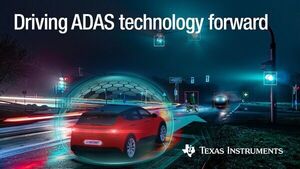
TI advances driver assistance technology to more accurately monitor blind spots and efficiently navigate turns and corners to safely avoid collisions
"In an effort to move autonomous driving and vehicle safety forward, Texas Instruments (TI) (Nasdaq: TXN) today announced an expansion of its automotive offerings that can help automakers improve how advanced driver assistance systems (ADAS) sense objects. TI’s new AWR2944 radar sensor adds to the company’s extensive portfolio of analog and embedded processing products and technologies, giving automotive engineers more tools that can fuel vehicle innovation. The increased ability to quickly detect objects, monitor blind spots, and efficiently navigate turns and corners paves the way for automakers to achieve their vision of a collision-free future. "Changing lanes and navigating tight corners present some of the most complex design challenges for our customers today," said Yariv Raveh, manager for TI millimeter-wave radar. "To create a safer driving experience, driver assistance systems must quickly and accurately process massive amounts of data and clearly communicate with the driver." According to the Federal Highway Administration, more than 50% of the combined total of fatal and injury crashes occur at or near intersections¹." [...]

Wi-Fi CERTIFIED 6™ Release 2 adds new features for advanced Wi-Fi® applications
"With adoption of Wi-Fi CERTIFIED 6™ growing steadily, Wi-Fi Alliance® is evolving Wi-Fi 6 certification to meet increasing demands from today’s Wi-Fi® use cases. Wi-Fi CERTIFIED 6 Release 2 is now available, bringing new features that support increasing device and traffic density to deliver greater performance and power management with Wi-Fi devices and applications. Wi-Fi CERTIFIED 6 Release 2 adds support for uplink multi-user multiple input, multiple output (multi-user MIMO) to deliver smoother streaming services and video conferencing, faster uploads, and more reliable gaming. Additionally, three power management features improve Wi-Fi CERTIFIED 6 power efficiency, benefitting enterprise, industrial, and Internet of Things (IoT) applications. New features apply across all bands supported by Wi-Fi 6 – 2.4 GHz, 5 GHz and 6 GHz - bringing capacity, efficiency, coverage and performance benefits to residential, enterprise, and large public networks. Wi-Fi CERTIFIED 6 delivers the best experience with advanced applications, while providing strong WPA3™ security and promoting interoperability between Wi-Fi CERTIFIED™ devices." [...]

VISION-S Exhibiting at CES 2022, Entering a New Phase
"At CES 2020, Sony Group Corporation ("Sony") announced "VISION-S," an initiative aimed at contributing to the evolution of mobility, and exhibited a prototype vehicle at its booth. To demonstrate this concept in the real world, Sony started public road testing in Europe in December of the same year, and started verification tests of the safety and user experience of the imaging and sensing technology installed inside and outside the vehicle, and the human-machine interface (HMI) system. Sony began 5G driving tests in April 2021, and will continue to apply its cutting-edge technologies to provide new experiences in the realm of mobility, which is undergoing a shift to electric vehicles (EV). Sony plans to further develop the above efforts as it enters a new phase of VISION-S development, and announced the following at CES 2022: Exhibiting a new SUV-type prototype vehicle that accommodates diverse values and lifestyles VISION-S continues its aim of evolving mobility to be even closer to people, while developing technologies centered on safety and security, adaptability, and entertainment. At CES 2022, Sony announced and exhibited an SUV-type prototype vehicle (VISION-S 02) as a new form factor. This vehicle uses the same EV/cloud platform as the prototype (VISION-S 01), which is being tested on public roads." [...]

E Ink Joins Forces with Premium Automaker Showing the BMW iX Flow Wrapped in Digital Paper Technology at CES 2022
"E Ink, (8069.TW), the originator, pioneer, and global commercial leader in digital paper technology, today announced BMW, Munich-based premium car manufacturer, will unveil the BMW iX Flow Featuring E Ink at CES 2022: an E Ink digital paper-wrapped concept car showcasing a transformation in the way surfaces are experienced. Combining E Ink’s innovative and rugged digital paper with BMW’s intelligent design algorithms enables the exterior to change from black to white in a dynamic flow. The iX Flow is using E Ink Prism, a design film developed by E Ink for the architecture and design markets. E Ink Prism is fully programmable, giving BMW the creative freedom to customize the patterns and materials. To accomplish this, E Ink engineers worked closely with BMW engineers to create optimal functionality and perfect color switching of their complex laser cut designs which align with the curves of the car. “E Ink’s color changing technology is technically amazing." [...]

Samsung Electronics Launches The Freestyle, a Portable Screen for Entertainment Wherever You Are
"Samsung Electronics today announced the launch of its all-new portable screen and entertainment device, The Freestyle, ahead of CES 2022. The Freestyle offers first-of-its-kind technology and flexibility to deliver optimal viewing and entertainment for customers looking to bring video and audio content wherever they go. Targeted toward Gen Z and millennials, The Freestyle is a projector, smart speaker and ambient lighting device all rolled into one lightweight, portable device. When it comes to portability, The Freestyle weighs only 830 grams allowing to change any space into a screen with ease. Unlike conventional, boxy projectors, The Freestyle’s versatile cradle allows rotation of up to 180 degrees, enabling users to show high-quality video anywhere – tables, floors, walls or even ceilings – no separate screen required. “The Freestyle is a one-of-a-kind projector geared towards ultimate versatility and flexibility to meet the consumers’ changing lifestyles,” said Simon Sung, Executive Vice President and Head of the Sales & Marketing Team of the Visual Display Business at Samsung Electronics." [...]
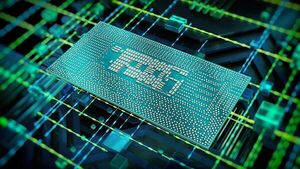
Intel Engineers Fastest Mobile Processor Ever with 12th Gen Intel Core Mobile
"Today at CES 2022, Intel announced the world’s fastest mobile processor, bringing its performance hybrid architecture to mobile platforms for the first time with new 12th Gen Intel Core mobile processors that are up to 40 percent faster than the previous generation mobile processor. Intel introduced 28 new 12th Gen Intel Core mobile processors that deliver a feature-rich suite of capabilities to create laptops for people to compute whenever and wherever they need – without compromise. With the introduction of the full 12th Gen Intel Core desktop processor lineup, the 12th Gen Intel Core processor family also represents the company’s most scalable lineup to date, powering designs across consumer, enterprise, the Internet of Things (IoT) and other applications. “Intel's new performance hybrid architecture is helping to accelerate the pace of innovation and the future of compute,” said Gregory Bryant, executive vice president and general manager of Intel’s Client Computing Group. “And, with the introduction of 12th Gen Intel Core mobile processors, we are unlocking new experiences and setting the standard of performance with the fastest processor for a laptop – ever.” Introducing 12th Gen Intel Core Mobile Processors Intel continues its introduction of industry-leading mobile performance with the launch of all-new 12th Gen Intel Core H-series mobile processors led by the Intel Core i9-12900HK – not only the world’s best mobile gaming platform, but also the fastest mobile processor ever created. By pairing Performance-cores (P-cores) and Efficient-cores (E-cores) with intelligent workload prioritization and management distribution through Intel® Thread Director3, the new Intel Core i9-12900HK improves system performance across single and multi-threaded applications." [...]

12th Gen Intel Core Processor for IoT Announced
"Today at CES 2022, Intel launched 12th Gen Intel® Core™ processors (code-named Alder Lake S-series and H-series), the first family of processors enhanced for the edge to feature performance hybrid architecture that combines Performance-cores and Efficient-cores with Intel® Thread Director. Enhanced to accelerate Internet of Things (IoT) application innovation, the new processors offer retail, manufacturing, healthcare and digital safety customers increased core counts and advanced graphics/media/display and AI capabilities, as well as a wide range of price, performance and power. Why It Matters: With the combination of Intel’s new performance hybrid architecture and Intel 7 process technology, the 12th Gen Intel Core processor family delivers key features that set it apart from other solutions available for retail, healthcare, manufacturing and video, including: High computing performance and flexibility for heavier IoT workloads. Accelerated AI and deep learning capabilities without additional hardware. Embedded use condition reliability. Enhanced integrated graphics processing units to support 4K and 8K displays." [...]

NXP Advances IoT Connectivity with Industry’s First Secure Tri-Radio Device
"NXP® Semiconductors (NASDAQ: NXPI) today announced the IW612, the industry’s first secure tri-radio device to support the Wi-Fi 6, Bluetooth 5.2 and 802.15.4 protocols. Part of NXP’s new family of tri-radio products, the new device enables seamless, secure connectivity for smart home, automotive and industrial use cases, and supports the new groundbreaking Matter connectivity protocol. The IW612 frees consumers from the restrictions of single protocol ecosystems, allowing them to enjoy seamless interoperability across different ecosystems and wireless network technologies. Additionally, developers benefit from NXP’s state-of-the-art coexistence capability, which enables simultaneous support of three radios on a single device, reducing costs and development time. One of the primary challenges facing the IoT is limited interoperability, which can restrict the consumer’s ability to mix smart home products from different companies. Matter, a new standardized IoT connectivity protocol, designed by a consortium of industry leaders including NXP, addresses these limitations by unifying how devices communicate, independent of the manufacturer or wireless technology." [...]
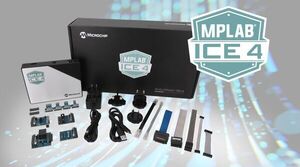
New In-Circuit Emulator (ICE) Boosts Productivity with Feature-Rich Programming and Debugging
"Microchip’s MPLAB ICE 4 In-Circuit Emulator is a full emulation, programming and debugging system featuring wireless connectivity, power debugging and real-time code profiling using trace Embedded engineers seeking complete analysis of projects for rapid development require easy-to-use yet powerful emulation hardware. Microchip Technology Inc. (NASDAQ: MCHP) today announced the MPLAB® ICE 4 next-generation full in-circuit emulator, debugging and programming development tool for the company’s PIC® and AVR® microcontrollers (MCUs), dsPIC® Digital Signal Controllers (DSCs), and SAM MCUs and microprocessors (MPUs). The MPLAB ICE 4 In-Circuit Emulator is Microchip’s fastest and most feature-rich emulation and programming tool for its MCUs and MPUs, debugging and programming with the powerful, easy-to-use graphical user interface of MPLAB X Integrated Development Environment (IDE). The MPLAB ICE 4 In-Circuit Emulator provides a flexible development experience including advanced debugging capabilities to write power-efficient code coupled with all the features needed to reduce debugging time. “Engineers can expand their development capabilities with this all-in-one, powerhouse system that provides new possibilities and applications with enhanced hardware and wireless connectivity options,” said Rodger Richey, senior director of Microchip’s development systems business unit. “Together with advanced power monitoring capabilities, embedded design engineers can simultaneously optimize both hardware and software for a comprehensive, power-efficient design.” The MPLAB ICE 4 In-Circuit Emulator system connects using SuperSpeed USB 3.0 or High-Speed USB 2.0 with an option to go wireless using Ethernet or Wi-Fi® connectivity for flexibility and ease of use." [...]
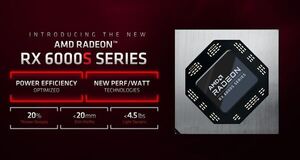
AMD Unveils New Power-Efficient, High-Performance Mobile Graphics for Premium and Thin-and-Light Laptops, and New Desktop Graphics Cards
"Today, during the 2022 Product Premiere livestream event, AMD (NASDAQ: AMD) unveiled additions and enhancements to the AMD Radeon™ graphics portfolio to deliver incredible, next-level experiences to more gamers than ever. Bringing higher levels of performance to power a new class of premium laptops, the new solutions expand the AMD Radeon RX 6000M Series mobile graphics family, with the addition of the AMD Radeon RX 6850M XT, Radeon RX 6650M XT, Radeon RX 6650M, Radeon RX 6500M and Radeon RX 6300M mobile graphics. AMD also announced the new AMD Radeon RX 6000S mobile graphics lineup – the AMD Radeon RX 6800S, Radeon RX 6700S and Radeon RX 6600S – optimized to bring power-efficient, high-performance gaming to incredibly thin-and-light laptops that are the fastest growing segment in the gaming laptop market2. For desktop PCs, AMD announced the AMD Radeon RX 6500 XT and Radeon RX 6400 graphics cards, designed to make incredible 1080p gaming experiences for popular AAA and esports titles accessible to more gamers. All of the new AMD Radeon graphics solutions leverage the breakthrough AMD RDNA™ 2 gaming architecture and offer high-bandwidth, low-latency AMD Infinity Cache™ memory technology and high-speed GDDR6 memory. They also support Microsoft Windows 11 and Microsoft DirectX® 12 Ultimate, AMD FidelityFX™ Super Resolution (FSR) upscaling technology and other advanced features that provide visually stunning, high-refresh rate gaming experiences." [...]

NXP Ramps Flagship 4D Imaging Radar Chip to Production, Adds New Product Tailored for Fast-Growing L2+ Market
"NXP® Semiconductors (NASDAQ: NXPI) has announced two updates to its industry leading automotive radar portfolio, now designed-in at 20 top global OEMs. The industry’s first dedicated 16nm imaging radar processor, the NXP S32R45, has been released into mass production, with initial customer ramp-up starting in the first half 2022. Additionally, the new NXP S32R41 has been introduced to extend 4D imaging radar’s benefits to a much larger number of vehicles. Together these processors serve the L2+ through L5 autonomy sectors, enabling 4D imaging radar for 360-degree surround sensing. Imaging radar extends radar’s ability beyond detecting bulky objects to “seeing” a vehicle’s environment through fine resolution point clouds that enhance environmental mapping and scene understanding. These images enable the classification of objects, such as vulnerable road-users and vehicles, in complex urban scenarios, such as a motorcycle driving close to a large delivery truck or a child entering a roadway between parked cars." [...]
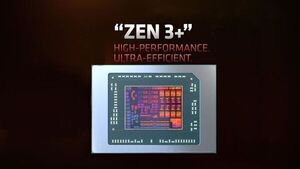
AMD Unveils New Ryzen Mobile Processors Uniting “Zen 3+” core with AMD RDNA 2 Graphics in Powerhouse Design
"Today, during the 2022 Product Premiere livestream event, AMD (NASDAQ: AMD) announced the full lineup of new AMD Ryzen™ 6000 Series processors for laptops, bringing the new, highly-efficient and extremely powerful, “Zen 3+” core architecture together with all-new AMD RDNA™ 2 architecture-based on-chip graphics. The new AMD Ryzen 6000 Series processors are built using TSMC’s 6nm process technology and deliver unprecedented levels of built-in graphics performance, offering revolutionary 1080p AAA gaming, along with cutting-edge features and superb battery life. AMD also announced the new Ryzen™ 7 5800X3D desktop processor with AMD 3D V-Cache™ technology for elite-level gaming performance that dominates the competition1, and previewed the new Ryzen™ 7000 Series CPU powered by “Zen 4” architecture and using the new AMD Socket AM5. “AMD is at the forefront of innovation in the PC industry, delivering unmatched experiences for creators, professionals and gamers,” said Saeid Moshkelani, senior vice president and general manager, Client business unit, AMD. “The new AMD Ryzen 6000 Series processors bring remarkable efficiency for impressive battery life, unbeatable built-in graphics and optimized performance to deliver the best AMD has to offer to every type of notebook user.” AMD Ryzen 6000 Series Processors It all starts with “Zen” architecture, and AMD Ryzen 6000 Series processors are built on the updated AMD “Zen 3+” core, optimized to deliver amazing performance-per-watt. These are the fastest AMD Ryzen processors yet, with up-to 5 GHz clock speeds2, up to 1.3 times faster processing speeds, and up to 2.1 times faster graphics then the 5000 Series.3 The “Zen 3+” core delivers power and efficiency, through new adaptive power management features that adjust speed quickly, and new deep sleep states that help save on power." [...]
Ciência e Tecnologia
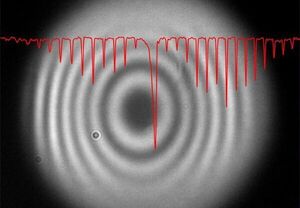
Pushing the boundaries of optics
"Quantum mechanically entangled light particles break down the boundaries of conventional optics and allow a glimpse into previously invisible wavelength ranges, thus bringing about new possibilities for imaging techniques, microscopy and spectroscopy. Unearthing these possibilities and creating technological solutions was the goal of the Fraunhofer lighthouse project QUILT, the results of which are now available. Light can do some amazing things. For example, light particles (photons) be entangled upon creation, which connects them inextricably to one another in terms of their properties, not just across great distances, but also across different wavelength ranges. These entangled photons are the tools used by the Fraunhofer researchers in the project “QUILT – Quantum Methods for Advanced Imaging Solutions.” They are using the photons to develop quantum optical solutions for wavelength ranges that have thus far proven to be virtually inaccessible. These wavelengths provide us with valuable information beyond the light of the visible spectrum: Short-wave ultraviolet radiation, for example, can be used to make the tiniest structures in cells visible." [...]

Suppressing the Auger recombination process in quantum dots
"Quantum Dot (QD) is a nanometer-sized semiconductor nanocrystal that has unique optical properties such as the ability to emit light in the range of optical frequencies depending on its size. QDs have already been applied to practical optoelectronic applications including light-emitting displays, solar cells, photodetectors, and lasers. In general, QDs have two distinct energy bands in which electrons can exist. They are the so-called “valence band” where electrons are fully occupied and the “conduction band” where electrons are empty, respectively. The gap between these two bands is called the “band gap”, where electrons cannot exist. Upon photoexcitation by light with higher energy than the band gap, electrons within the valence band can be excited and jump into the conduction band." [...]

The first topological acoustic transistor
"Sound waves may pave the way for topological electronic transistors Topological materials move electrons along their surface and edges without any loss, making them promising materials for dissipationless, high-efficiency electronics. Researchers are especially interested in using these materials as transistors, the backbone of all modern electronics. But there’s a problem: Transistors switch electronic current on and off, but it’s difficult to turn off the dissipationless flow of electrons in topological materials. Now, Harvard University researchers have designed and simulated the first topological acoustic transistors — with sound waves instead of electrons — and proposed a connection architecture to form a universal logic gate that can switch the flow of sound on and off. “Since the advent of topological materials around 2007, there has been a lot of interest in developing a topological electronic transistor,” said Jenny Hoffman, the Clowes Professor of Science at the Harvard John A. Paulson School of Engineering and Applied Sciences (SEAS) and the Department of Physics. “Although the materials we used won't yield an electronic topological transistor, our general design process applies to both quantum materials and photonic crystals, raising hopes that electronic and optical equivalents may not be far behind.” The research is published in Physical Review Letters." [...]
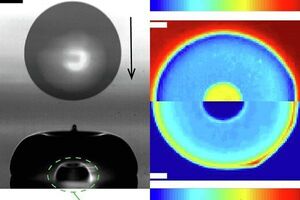
Heat conduction plays prominent role in droplet dynamics
"When driving in the rain, it’s preferable that the raindrops roll or bounce off of the windshield instead of coating it or even freezing. A team of engineers in the McKelvey School of Engineering at Washington University in St. Louis found that conduction of heat plays a larger role than previously thought in the dynamics of droplets on smooth surfaces that repel water. Patricia Weisensee, assistant professor of mechanical engineering & materials science, and Junhui Li, a doctoral student in her lab, made the finding after using high-speed imaging methods to study a microscopic entrapped bubble that forms when droplets of water hit a heated, smooth, water-repellant surface. Results of the research are published in the Experimental Thermal and Fluid Science Jan. 1, 2022 print issue. The bubble — only a few hundred microns in size — forms inside a water droplet from absorbing the air underneath it as it begins to lift off from the surface. “We’re creating capillary waves on the droplet, because as the droplet impacts, it compresses, and that sends a shockwave through the droplet and creates a doughnut-shaped droplet with the air bubble entrapped in the middle,” Weisensee said." [...]
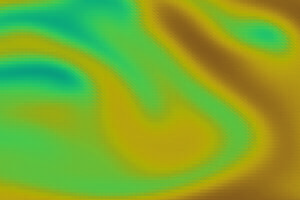
Seeing the plasma edge of fusion experiments in new ways with artificial intelligence
"MIT researchers are testing a simplified turbulence theory’s ability to model complex plasma phenomena using a novel machine-learning technique. To make fusion energy a viable resource for the world’s energy grid, researchers need to understand the turbulent motion of plasmas: a mix of ions and electrons swirling around in reactor vessels. The plasma particles, following magnetic field lines in toroidal chambers known as tokamaks, must be confined long enough for fusion devices to produce significant gains in net energy, a challenge when the hot edge of the plasma (over 1 million degrees Celsius) is just centimeters away from the much cooler solid walls of the vessel. Abhilash Mathews, a PhD candidate in the Department of Nuclear Science and Engineering working at MIT’s Plasma Science and Fusion Center (PSFC), believes this plasma edge to be a particularly rich source of unanswered questions. A turbulent boundary, it is central to understanding plasma confinement, fueling, and the potentially damaging heat fluxes that can strike material surfaces — factors that impact fusion reactor designs. To better understand edge conditions, scientists focus on modeling turbulence at this boundary using numerical simulations that will help predict the plasma's behavior." [...]

Engineers develop new software tool to aid material modeling research
"A new software tool can accelerate materials science research by cutting out tedious background research on material properties. Penn State and Sandia National Laboratories researchers recently debuted propSym, an open-source software on the programming platform MATLAB, to calculate the fundamental constants needed to describe the physical properties of solids, such as metals, ceramics or composites. Researchers input a material’s physical characteristics and structure, and the program produces its fundamental property constants — key values researchers need to model various materials. “Some physical models contain hundreds or thousands of redundant components, which can make the model overwhelming,” said Anubhav Roy, a doctoral student in engineering science and mechanics in the Penn State College of Engineering and first author on the paper. “The program is able to greatly reduce the number of components for any physical property that is connected to solids with inherent crystalline symmetry.” The researchers developed propSym, the details of which were published in the Journal of Applied Crystallography, after they could not find reliable information about langasite — a material used in sensing and energy harvesting devices — in a separate joint study with Sandia National Labs. “Traditionally, the relationships between fundamental constants and material symmetries are found only in appendices of textbooks or tables in journal articles,” said Christopher Kube, assistant professor of engineering science and mechanics at Penn State, who led the project." [...]
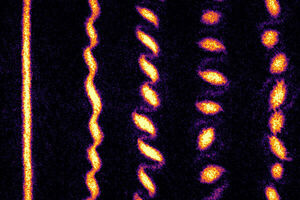
Physicists watch as ultracold atoms form a crystal of quantum tornadoes
"The new observations record a key crossover from classical to quantum behavior. The world we experience is governed by classical physics. How we move, where we are, and how fast we’re going are all determined by the classical assumption that we can only exist in one place at any one moment in time. But in the quantum world, the behavior of individual atoms is governed by the eerie principle that a particle’s location is a probability. An atom, for instance, has a certain chance of being in one location and another chance of being at another location, at the same exact time. When particles interact, purely as a consequence of these quantum effects, a host of odd phenomena should ensue." [...]

Researchers uncover basics of common industrial catalytic processes
"Catalysts are used in a wide variety of industrial processes around the world in everything from the production of medicines, fertilizers, plastics, and other household products to the processing of fossil fuels. They speed up chemical reactions with the aim of minimizing energy usage. But while they are critically important, catalysts have often been developed through trial and error or tradition rather than through scientific principles. Using a combination of microscopy and spectroscopy to get real-world imagery as well as sophisticated theoretical calculations, Washington State University researchers collaborated with Prof. Junfa Zhu from the University of Science and Technology of China to unravel an underlying mechanism of a catalytic reaction at the atomic level. The work, published in the high-impact journal of the American Chemical Society, JACS, improves fundamental understanding of reactions that could someday lead to more efficient industrial processes. “There’s a popular image of something like witch’s brew in which things are randomly stirred together to make the catalysts what they are." [...]
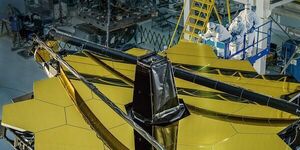
Physicist Seeks To Understand Dark Matter with Webb Telescope
"The much-anticipated launch of the James Webb Space Telescope will usher in a new era of research on our universe. Among the many researchers planning to take advantage of the data from the Hubble Space Telescope's successor is Carnegie Mellon University Associate Professor of Physics Matthew Walker, who is principal investigator of a program making use of data collected in telescope's first year of operation. "The top-level science goal is to learn about the nature of dark matter," Walker (at right) explained. This theoretical form of matter has never been directly detected but is estimated to comprise most of the matter in the universe. Various theories have arisen about the form dark matter takes, with the currently dominant cold dark matter theory predicting that it exists in clumps called halos with small basic units, as opposed to galaxy-sized agglomerations. "One of the key predictions we're trying to test of cold dark matter is the existence of these so-called sub-galactic dark matter halos," Walker said." [...]

How to test the limits of quantum mechanics
"Researchers from Imperial College London and Lancaster University have suggested a new approach to test the limits of applicability of quantum mechanics. Quantum physics has long provided humanity with an elegant framework for understanding the microscopic world. However, quantum phenomena do not exist in our everyday lives. Many factors contribute to the transition between the quantum and classical regimes, but is there a fundamental mechanism that results in this transition? And how exactly does a wavefunction consisting of multiple possibilities collapse into one definite outcome? Numerous models, collectively referred to as objective-collapse theories, have been suggested in the hope of addressing these outstanding fundamental questions." [...]
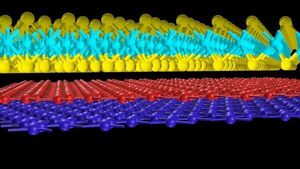
Magnetic surprise revealed in ‘magic-angle’ graphene
"Magnets and superconductors don’t normally get along, but a new study shows that ‘magic-angle’ graphene is capable of producing both superconductivity and ferromagnetism, which could be useful in quantum computing. When two sheets of the carbon nanomaterial graphene are stacked together at a particular angle with respect to each other, it gives rise to some fascinating physics. For instance, when this so-called “magic-angle graphene” is cooled to near absolute zero, it suddenly becomes a superconductor, meaning it conducts electricity with zero resistance. Now, a research team from Brown University has found a surprising new phenomenon that can arise in magic-angle graphene. In research published in the journal Science, the team showed that by inducing a phenomenon known as spin-orbit coupling, magic-angle graphene becomes a powerful ferromagnet. “Magnetism and superconductivity are usually at opposite ends of the spectrum in condensed matter physics, and it’s rare for them to appear in the same material platform,” said Jia Li, an assistant professor of physics at Brown and senior author of the research." [...]

NUS engineers bring a soft touch to commercial robotics
"Inspired by the natural dexterity of the human hand, a team of engineers from the National University of Singapore (NUS) has created a reconfigurable hybrid robotics system that is able to grip a variety of objects: from the small, soft and delicate to the large, heavy and bulky. This technology is expected to impact a range of industries, involving food assembly, vertical farming and fast-moving consumer goods packaging, which will progressively automate more of their operations in the coming years. Led by Associate Professor Raye Yeow from the NUS Department of Biomedical Engineering and the NUS Advanced Robotics Centre, the hybrid robotic grippers use soft, flexible 3D-printed fingers with a reconfigurable gripper base. The robotic innovation is now in the process of being brought to commercial partners under the team’s start-up RoPlus (RO+), comprising NUS researchers Low Jin Huat, Khin Phone May, Chen Chao-Yu and undergraduate student Han Qian Qian. “An object’s shape, texture, weight and size affect how we choose to grip them. This is one of the main reasons why many industries still heavily rely on human labour to package and handle delicate items,” Assoc Prof Yeow said." [...]

Truly revealing when a material becomes ‘glassy’
"New findings on the glass phase of ‘active matter’ ends an intense debate in the soft matter physics community. Is it in a liquid phase or a ‘glassy’ phase? This question has been the subject of intense debate as physicists try to understand the behavior of so-called ‘active matter’ – a relatively new type of matter where particles use ‘a little internal engine’ to move. With a new observation – published in the prestigious journal Physical Review Letters – TU/e researchers now resolve all contradictory results at the same time, thereby paving the way towards a better understanding of cell behavior in diseases like asthma and cancer. For many, the phrase ‘phases of matter’ immediately evokes thoughts of gasses, liquids, and solids – the best-known phases of matter. Between the liquid and solid phase though, you’ll find the glass phase, a phase that behaves like a solid, but on the inside looks like a liquid." [...]

Artificial lightning to prompt nuclear fusion
"Pulsed electric fields, such as the ones caused by lightning strikes, manifest themselves as voltage spikes, posing a destructive threat to electronic components and causing considerable damage. Scientists from the Helmholtz-Zentrum Dresden-Rossendorf (HZDR) have now discovered that such voltage spikes can also have useful properties. In the journal Physical Review Research (DOI: 10.1103/PhysRevResearch.3.033153), they report how nuclear fusion processes, for instance, can be significantly reinforced by extremely strong and fast-pulsed electric fields. Nuclear fusions, such as those taking place in the sun, are enabled by the quantum mechanical tunneling effect. “The tunneling effect can help particles of like charge to overcome their mutual repulsion even if they don’t actually have enough energy to do so – at least not according to the laws of classical mechanics,” says Prof. Ralf Schützhold, head of the Theoretical Physics Department at HZDR: “We can observe this in the fusion of two light atomic nuclei, for example: The closer one nucleus gets to another, the greater the repulsion, like a mountain piling up in front of the nucleus. This is called the potential barrier." [...]
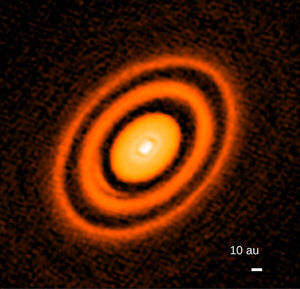
Earth isn’t ‘super’ because the sun had rings before planets
"Pressure bumps’ in sun’s protoplanetary disk explain many solar system features Before the solar system had planets, the sun had rings — bands of dust and gas similar to Saturn’s rings — that likely played a role in Earth’s formation, according to a new study. “In the solar system, something happened to prevent the Earth from growing to become a much larger type of terrestrial planet called a super-Earth ,” said Rice University astrophysicist André Izidoro, referring to the massive rocky planets seen around at least 30% of sun-like stars in our galaxy. Izidoro and colleagues used a supercomputer to simulate the solar system’s formation hundreds of times. Their model, which is described in a study published online in Nature Astronomy, produced rings like those seen around many distant, young stars. It also faithfully reproduced several features of the solar system missed by many previous models, including: - An asteroid belt between Mars and Jupiter containing objects from both the inner and outer solar system. - The locations and stable, almost circular orbits of Earth, Mars, Venus and Mercury." [...]

Bringing the Sun into the lab
"Liquid-metal experiment provides insight into the heating mechanism of the Sun's corona Why the Sun's corona reaches temperatures of several million degrees Celsius is one of the great mysteries of solar physics. A "hot" trail to explain this effect leads to a region of the solar atmosphere just below the corona, where sound waves and certain plasma waves travel at the same speed. In an experiment using the molten alkali metal rubidium and pulsed high magnetic fields, a team from the Helmholtz-Zentrum Dresden-Rossendorf (HZDR) has developed a laboratory model and for the first time experimentally confirmed the theoretically predicted behavior of these plasma waves – so-called Alfvén waves – as the researchers report in the journal Physical Review Letters (DOI: 10.1103/PhysRevLett.127.275001). At 15 million degrees Celsius, the center of our Sun is unimaginably hot. At its surface, it emits its light at a comparatively moderate 6000 degrees Celsius. "It is all the more astonishing that temperatures of several million degrees suddenly prevail again in the overlying Sun's corona," says Dr. Frank Stefani." [...]
3D semiconductor particles offer 2D properties
"When it comes to creating next-generation electronics, two-dimensional semiconductors have a big edge. They’re faster, more powerful and more efficient. They’re also incredibly difficult to fabricate. Three-dimensional semiconductor particles have an edge, too – many of them – given their geometrically varied surfaces. Cornell researchers have discovered that the junctures at these facet edges have 2D properties, which can be leveraged for photoelectrochemical processes – in which light is used to drive chemical reactions – that can boost solar energy conversion technologies. This research, led by Peng Chen, the Peter J.W." [...]
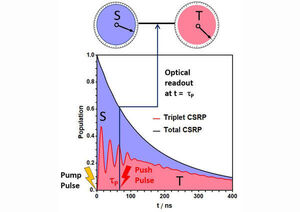
Snapshots from the quantum world
"A research collaboration with participation of the University of Konstanz can read out optically previously indistinguishable spin states by using a newly developed spectros-copy method The alternation between singlet and triplet states of electron pairs in charge-separated states plays an important role in nature. Presumably, even the compass of migratory birds can be explained by the influence of the geomagnetic field on the magnetic interplay between these two spin states. Until now, this quantum process could not be followed directly optically and only be evaluated summarily in the final product. In the current issue of the journal Science, a research collaboration with Professor Ulrich Steiner from the University of Konstanz and researchers from the Universities of Würzburg and Novosibirsk (RUS) presents the pump-push-pulse technique, allowing for the first time to optically determine the time course of the singlet/triplet ratio. This opens up new avenues, for example in the field of organic solar cells, but also for qubits in quantum computers. Normally, electrons in a molecule occupy the quantum theoretically allowed orbits pairwise." [...]
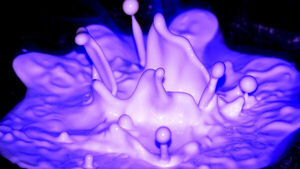
An Injection of Chaos Solves Decades-Old Fluid Mystery
"In the 1960s, drillers noticed that certain fluids would firm up if they flowed too fast. Researchers have finally explained why. Fluids can be roughly divided into two categories: regular ones and weird ones. Regular ones, like water and alcohol, act more or less as expected when pumped through pipes or stirred with a spoon. Lurking among the weird ones — which include substances such as paint, honey, mucus, blood, ketchup and oobleck — are a vast variety of behavioral enigmas that have stumped researchers over the centuries. One such long-standing puzzle, first articulated nearly 55 years ago, arises when certain liquids stream through cracks and holes in a porous landscape such as spongy soil." [...]

Revitalizing batteries by bringing ‘dead’ lithium back to life
"Islands of inactive lithium creep like worms to reconnect with their electrodes, restoring a battery’s capacity and lifespan. Researchers at the Department of Energy’s SLAC National Accelerator Laboratory and Stanford University may have found a way to revitalize rechargeable lithium batteries, potentially boosting the range of electric vehicles and battery life in next-gen electronic devices. As lithium batteries cycle, they accumulate little islands of inactive lithium that are cut off from the electrodes, decreasing the battery’s capacity to store charge. But the research team discovered that they could make this “dead” lithium creep like a worm toward one of the electrodes until it reconnects, partially reversing the unwanted process. Adding this extra step slowed the degradation of their test battery and increased its lifetime by nearly 30%. “We are now exploring the potential recovery of lost capacity in lithium-ion batteries using an extremely fast discharging step,” said Stanford postdoctoral fellow Fang Liu, the lead author of a study published Dec. 22 in Nature." [...]

System recognizes hand gestures to expand computer input on a keyboard
"Researchers are developing a new technology that uses hand gestures to carry out commands on computers. The prototype, called “Typealike,” works through a regular laptop webcam with a simple affixed mirror. The program recognizes the user’s hands beside or near the keyboard and prompts operations based on different hand positions. A user could, for example, place their right hand with the thumb pointing up beside the keyboard, and the program would recognize this as a signal to increase the volume. Different gestures and different combinations of gestures can be programmed to carry out a wide range of operations. The innovation in the field of human-computer interaction aims to make user experience faster and smoother, with less need for keyboard shortcuts or working with a mouse and trackpad." [...]

FAST Detects Coherent Interstellar Magnetic Field with a Technique Conceived at Arecibo
"Magnetic fields are the essential, but often "secret" ingredients of the interstellar medium and the process of making stars. The secrecy shrouding interstellar magnetic fields can be attributed to the lack of experimental probes. While Michael Faraday was already probing the link between magnetism and electricity with coils in the early 19th century in the basement of the Royal Institution, astronomers nowadays still cannot deploy coils light-years away. Using the Five-hundred-meter Aperture Spherical radio Telescope (FAST), an international team led by Dr. LI Di from National Astronomical Observatories of Chinese Academy of Sciences (NAOC) has obtained accurate magnetic field strength in molecular cloud L1544 - a region of the interstellar medium that seems ready to form stars. The team employed the so-called HI Narrow Self-Absorption (HINSA) technique, first conceived by LI Di and Paul Goldsmith based on Arecibo data in 2003. FAST's sensitivity facilitated a clear detection of the HINSA's Zeeman effect." [...]
Modelos 3D
Com a disponibilidade de ferramentas que permitem dar azo a nossa imaginação na criação de peças 3D e espaços como o thingiverse para as publicar, esta rubrica apresenta alguns modelos selecionados que poderão ser úteis.
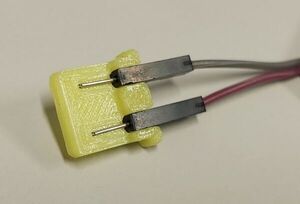
USB to Dupont adapter for power supply 5V Arduino Raspberry Pi
"This is a simple adaptor I created to not always solder cables and usb plugs. These are expensive too.. Two single male Dupont connectors can be inserted and when it is pluged into a USB port you are able to harness power from it for any reason imaginable. I use them to power my Lattepanda and after several prints and improvements I can proudly share this very handy gadget. I think it will be interesting for Arduino stuff. Have fun :)" [...]

lasercut.scad
"Module for openscad, allowing 3d models to be created from 2d lasercut parts, with a flat file automatically generated. Updated, not just lasercut can now pass the parameter milling_bit for CNC machines, for the bit to cut in to the corners. " [...]
Documentação
A documentação é parte essencial do processo de aprendizagem e a Internet além de artigos interessantes de explorar também tem alguma documentação em formato PDF interessante de ler. Todos os links aqui apresentados são para conteúdo disponibilizado livremente pelo editor do livro.

The Pinouts Book
"The Pinouts Book is a free digital book created for designers and engineers as a quick reference for remembering the different pinout functions in your electronics projects. The book covers 130 commonly used components (view list), such as connectors, single board computers, dev boards, memory cards, microcontroller chips, and more. If you need more technical information, each page has a link at the top (e.g. pinouts.org/XXX), and these redirect to official datasheets / specifications. We’re going to be updating the book as time goes on, and we hope you find it useful. Happy building :) NODE & Baptiste" [...]
Projetos Maker
Diversos Projetos interessantes.
NeoPixel Punk Console
"Blinking RGB LEDs with 555s and a handful of 74-series logic The goal of this project is to display colorful patterns on a strip of WS2812 or SK6812 RGB LEDs (aka NeoPixels) without the help of an MCU. Addressable RGB LEDs are driven through a series of pulses, with different pulse-widths representing 1s and 0s making up 24 bit colors, and another longer pulse to mark the end of a refresh cycle. Sounds like the perfect target to exercise a handful of 555 timers. The project can be split into two parts: Driver for the LED strip Generator of the color patterns RGB LED DRIVER The protocol to talk to RGB LEDs consists of three pulses. According the datasheet for the common WS2812B those are: 0 bit: 0.4 us high and 0.85 us low 1 bit: 0.8 us high and 0.45 us low reset: longer than 50 us low The datasheet specifies +/- 150 ns, but luckily for us the LEDs are not that fussy. The plan is to use a 555 configured as an astable oscillator to generate the master clock at approximately 800 kHz, which is equal to the duration of one bit." [...]
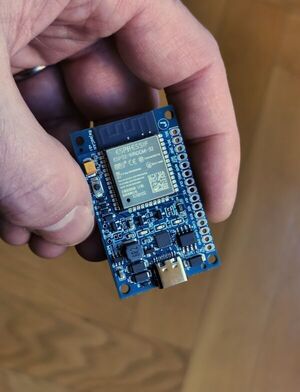
RejsaCAN
"RejsaCAN is a 3x5 centimeter small ESP32 based board aimed at car use that I put together for my own use in my assorted crazy car projects. The board has an on board CAN interface and can be powered directly from the car (5-15V). It also includes the option to auto shutdown so not to drain the car battery. There is no bespoke code for the board apart from pin definitions, it's just a piece of universal hardware, but by using easy to use open source Arduino libraries it can be made to interface not only to various CAN buses, Network/Wifi and Bluetooth but to numerous sensors and other peripherals using the ESP32's built in interfaces. If you think the board really would fit your project you can give me a holler at [email protected]. I had JLCPCB make and assemble my own small batch of boards." [...]
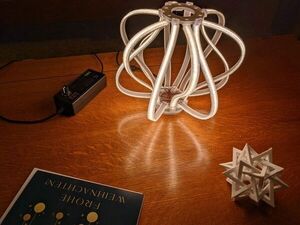
LED Sculpture Lamp
"Inspired by the idea of a curved lamp using LED strips, I created this 3D printable design. Thanks to the adjustable power supply, it is dimmable. To build the full lamp, 3 meters of LEDs are required. " [...]
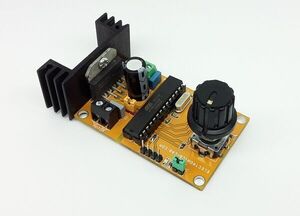
Brushed DC Motor Controller Using Rotary Encoder – Arduino Compatible
"This DC Motor controller provides direction and speed control of brushed DC Motor using Rotary Encoder. This is Arduino compatible hardware that consists of LMD18201 DC motor driver chip, Atmega328 microcontroller, Rotary Encoder, L317 regulator, and other components. Hardware offers easy control of brushed DC motor up to 3A with speed, direction, and brake control. The encoder includes a tactile switch, which can be used to control the ON/OFF or Direction of the motor and the encoder helps to set the speed. A rotary encoder is a type of position sensor which is used for determining the angular position of a rotating shaft. It generates two pulses, according to the rotational movement, these two pulses determine the direction of the shaft and angular position, this encoder is also included with a mechanical switch." [...]
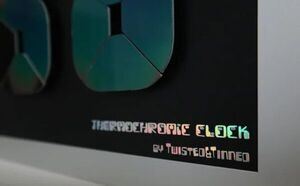
Thermochromic Clock - Frame Version
"I am repeating myself lately but here is yet another thermochromic project because I really like the effect of these liquid crystal sheets. This time I wanted to make a large clock that you can hang on your wall. The clock uses a 4-digit 7-segment display with the hours and minutes arranged vertically with a slight offset. Each segment consists of a PCB heater that is covered with a thermochromic liquid crystal sheet that changes color when the segment is heated. Supplies: - 28 pcs, custom segments PCB - custom controller PCB - 350x450mm thermochromic liquid crystal sheet, 30-35°C - 280x350x20mm aluminum frame - 280x350x2mm black anodized aluminum plate - 56 pcs, PCB spacers, 5mm - 28 pcs, JST PH to Dupont cable, 30cm - 5V, 5A power supply A detailed BoM can be found on my GitHub account. You will also need - SMD soldering equipment - 2K epoxy glue - exacto knife The PCB that is controlling the segments was also designed in KiCad." [...]
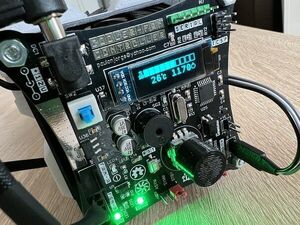
Silent Running With This Dual Fan Controller
"Add a quiet fan cooling system to existing equipment with this configurable controller. I prefer a quiet and calm environment. It's why I prefer listening to the more mellow broadcasts from BBC Radio 4 or Classic FM. It's why I like full break-in CW on PIN diode rigs from Elecraft and Ten-Tec. It's why I run a Mac Mini for macOS and a fanless industrial PC for Windows. More often than not, equipment cooling and equipment noise go hand in hand." [...]
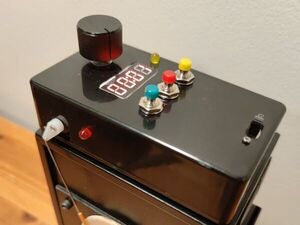
Electronic shutter control for pinhole camera
"Control your pinhole camera with ease with this ultimate shutter control that delivers also timer and reciprocity control. Story Ultimate pinhole camera shutter control Tired of waiting and watching seconds to run to get correct exposure with your pinhole camera. Not anymore. With this portable shutter control unit you can relax and let the Arduino do to job. Control unit is packed to be attachable different pinhole cameras with sliding shutter. Features: Shutter control with servo motor Exposure time selection with rotary encoder." [...]
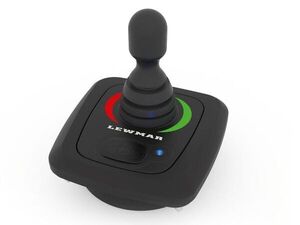
The Joystick Game
"A simple led based game. I was looking for something to use my joystick for and I found a project and then I thought: Why not make it a game? " [...]

PALPi Version 2, final edition
"Made a Raspberry Pi Based Game controller with a Big Display and custom PCBs For Power Distribution Board- Custom PCBs - IP5306 IC - 10uf 1206 Package Capacitor x8 - 2R 0805 Package x1 - 1K 0603 Package x2 - 10uH Inductor x1 - SMD Button x1 - Indicator LEDs x4 - THT USB Micro Port x1 - 18650 Dual Li-ion Cells holder x1 - Li-ion Cells 3.7V 2600mah x2 - Female Header pins Con40 x1 For Button Board- - Toggle switch x13 - Custom PCB For Assembly- - Raspberry Pi Model 3B+ - 7-inch Display with HDMI Port - Power Distribution Board - Left Side Button Board - Right Side Button Board - RED Wires - Green Wires - 3D Printed body - Screws, nuts, and bolts" [...]

Tesla Battery Charge Reminder
"Arduino Nano or ATTiny85 sounds a buzzer if the Tesla is in the garage for more than 30 minutes without being plugged in. I built this project because my wife and I sometimes forget to plug in our Tesla after parking it in the garage (I forget, she just doesn’t do it). It usually happens when we unload groceries because I wait to plug in until after the bags are out of the trunk, otherwise the charging cable is a trip hazard and the charge plug could get bumped. We tried setting a reminder alarm for 8PM every evening but it eventually became background noise. I wish Tesla would add some code to their phone app to remind me to plug in the car. This issue has been discussed numerous times on the Tesla forums but nothing has been done." [...]
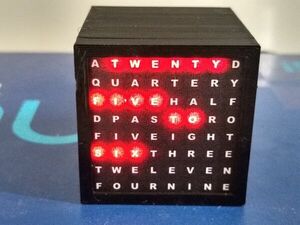
Micro Word Clock
"A 3D printed Micro Word Clock based on a 8x8 LED matrix. Time is shown as words or and as scrolling text. Around 6 months ago I built a Tiny Word Clock using a 60mm x 60mm LED matrix. It was based on a word clock by gfwilliams. He used a 30x30mm LED matrix with a printed label to define the letters. I was skeptical at the time whether an ink printed label was going to be dark enough to prevent light bleeding into adjacent letters." [...]
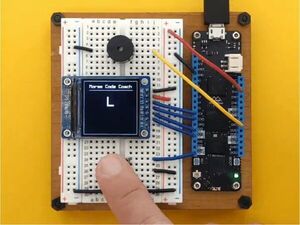
Train your Morse Code spelling skills with Meadow
"Learn how to spell the random alphabet letters and numbers in morse code with a push button using Meadow. This project is going to show you how easy is to make a Morse Code trainer using a Push Button, a Display using MicroGraphics and a Piezo speaker to make a buzzing sound when pushing the button. We'll write our application using all the peripheral drivers included in Meadow.Foundation. Meadow.Foundationa platform for quickly and easily building connected things using.NET on Meadow. Created by Wilderness Labs, it's completely open source and maintained by the Wilderness Labs community. If you're new working with Meadow, I suggest you go to the Getting Started w/ Meadow by Controlling the Onboard RGB LEDproject to properly set up your development environment." [...]
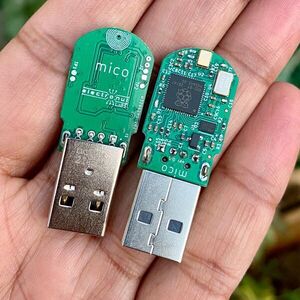
Mico: A PDM to USB microphone based on the Raspberry Pi RP2040
"Mico is an Open Source PDM to USB microphone based on the Raspberry PI RP2040. Earlier this year, I was doing audio experiments with Machine Learning (ML) on the Raspberry Pi, and was looking for a compact USB microphone. The one which is commonly available is shown below. While it was convenient to plug this in and access it from Python using pyaudio, the sound quality from this mic was terrible. Extremely noisy with poor (distance) sensitivity. Ultimately I completed my audio recognition project using an I2S microphone which had a much better audio quality." [...]
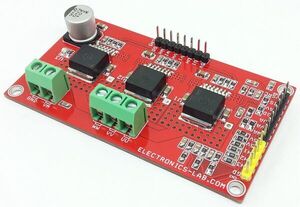
BLDC Motor and DC Brushed Motor Driver
"This BLDC motor driver board is equipped with a smart IFX007T half-bridge. The BLDC motor control project is capable to drive one BLDC motor. Alternatively, it can be used to drive one or two bi-directional DC motors (H-Bridge configuration, cascaded to support the second motor) or up to three uni-directional DC motors (half-bridge configuration). The implemented integrated IFX007T half-bridges can be controlled by a PWM via the IN Pin. Interfacing to a microcontroller or Arduino is easy by the integrated driver IC which features logic level inputs, diagnosis with current sense, slew rate adjustment, and dead time generation, etc. The three IFX007T half-bridges are also fully protected against over-temperature, under-voltage, overcurrent, and short circuit events." [...]

Arduino Height Measuring Using VL53L0X Laser Sensor
"Make a Height Measuring tool using a VL53L0X.Time-of-Flight ranging sensor Make a Height Measuring tool using a sensor VL53L0X. The VL53L0X is accurate up to plus or minus 2-3mm (depends on the surface reflection). This project is just to show how to make it work on a smaller objects. Sensor can measure up to 2m so you can adjust the projects according to your needs. This approach could also be used to measure the water/liquid height. How It works: On the Arduino start the VL53L0X remembers the full distance in mm then after the object is placed under it will subtract the New distance from the first one and the result will be the height of the object in mm." [...]
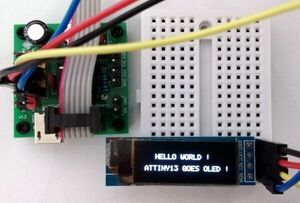
TinyOLEDdemo - I2C OLED on an ATtiny10, ATtiny13A or ATtiny202
"Connect the OLED module to the ATtiny13A as shown below. The connections for the ATtiny10 are similar. For the ATtiny202 SDA must be connected to PA1 (pin 4) and SCL (or SCK) to PA2 (pin 5). Since the I²C implementation for ATtiny10/13A is software-based, you can of course use any other I/O pins instead. Just change the relevant definitions in the code. The implementation for the ATtiny202 uses hardware TWI, so the pins provided for this must be used." [...]

Mowerino
"Autonomous Robot lawn mower, with bluetooth connection for RC mode. I decided to build by myself my Robot Lawnmower, with Arduino Mega 2560 Board. The whole process has taken a long time, with some experiments and now the configuration is completed and Mowerino works fine. Stay tuned with this project because I would like to improve it in the future. WARNING! This project is not a toy, it contains sharp blades which can cause serious injuries if it is not used carefully." [...]
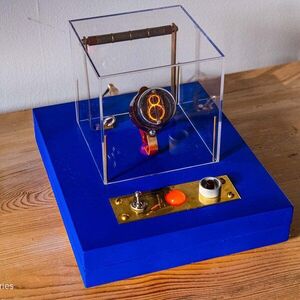
Cosmic Background Radiation Dice
"A true random number generator using cosmic background radiation. This is randomness at your fingertips put together in a sculpture. To throw the dice a total of eight particles from the Big Bang needs to pass through the old Soviet geiger tube. The device measures the number of microseconds between two particles, if the number is even a zero is added, if the number is odd a one is added to a binary representation of the number. When four binary digits are decided the number is shown on the old American nixie tube in a retro tango between the two cold war players. " [...]
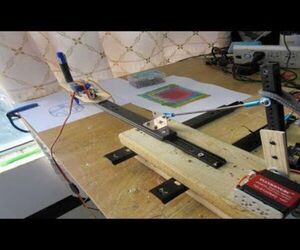
Two Servo and Drawer Slide Pen Plotter
"Built this primitive 2d pen plotter using two standard servos (plus one microservo for pen) and 3 drawer slides. Software is DrawingBotV3 to create gcode which is sent to Arduino Uno via Python script. Simple and draws crude prints but perfect for artwork. Uses polynomial functions for x and y to translate servo angles into linear positions. Why build this plotter when you can buy a DIY plotter kit for $60 that prints very accurately? For two reasons: I want a printer that makes hand drawn looking prints though I am probably just rationalizing a bit." [...]
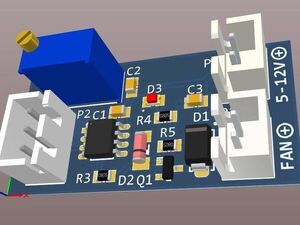
Cooling FAN Controller Using an LM35 (No MCU)
"Cooling FAN Controller Using an LM35 (No MCU) The high temperature of the power components is a known phenomenon in electronics. To overcome this challenge, the designers mount heatsinks on the components to dissipate the heat, however, in many commercial and home appliance devices, the embedded heatsink is not adequate and the air must be circulated faster to reduce the heatsink and component temperature, otherwise, the lifetime of the component is reduced significantly. The proposed automatic FAN controller board is simple, compact, and can be embedded inside commercial devices. The LM35 temperature sensor could be fixed on the heatsink using some silicon glue. The user can easily set the temperature threshold using a potentiometer. The board can be supplied using a 5V or a 12V supply, therefore a variety of 5V, 12V, miniature, and PC FANs can be used." [...]
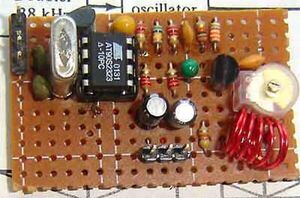
Simple Stereo FM Transmitter using an AVR Microcontroller
"I had been fascinated with the idea of making simple stereo encoder for building Stereo FM Transmitter. Not that stereo means much to me away from the computer. I use an FM broadcast transmitter to relay the output of my computers to FM radios in the kitchen, the bedroom, the driveway, and out in the garden. Under those circumstances, I find that mono is plenty, whether it is music or radio programs from over the internet, since I am primarily occupied with something else anyway. When on my hands and knees in the garden, all the way up to my elbows in planting a bush, the music really does not seem any more sweet when its stereo. But that did not stop me from being fascinated with the idea of making a stereo encoder." [...]
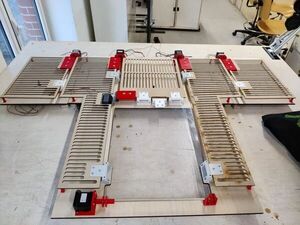
Fold My T-shirt Robot
"Hello everyone, I would like to start by asking a question: Wouldn't it be great to have a robot at home that folds your t-shirts as they are folded when you buy them in a shop? If your answer is ''yes of course!'' you are in the right place. In the following instructables we are going to show you the whole process of developing and building a robot that can fold your t-shirts autonomously. The project is part of the electromechanical engineering course of study of Bruface programme, in particular is a joint project between the Design methodology and mechatronics 1 courses. For this reason, we will describe in detail the entire development process from the identification of customer needs and market analysis to the actual practical realization of each component, electronic system and the entire assembly." [...]
Secção Videos
Videos interessantes.
That's all Folks!



